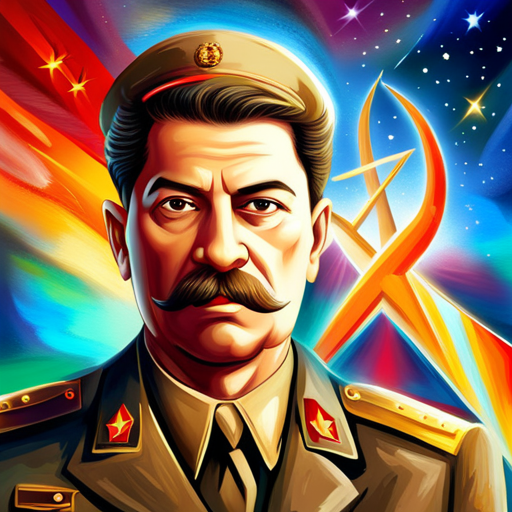Autobiography of Joseph Stalin
My Early Years
Born in the small Georgian town of Gori on December 18, 1878, I was christened as Ioseb Besarionis dze Jughashvili. My father, a cobbler, and my mother, a washerwoman, were simple, poor folks. My early years were marred by my father’s violent alcoholism, which gave me my first taste of the relentless brutality that life can mete out.
Education and Revolutionary Zeal
When I was nine, I entered the Orthodox Church School in Gori, a time when I was known more for my intelligence than for my force. At fourteen, I earned a scholarship to Tiflis Theological Seminary, a spiritual institution where I had the chance to question and explore ideas that were not welcome in such a place.
In Tiflis, I discovered a different kind of religion – Marx and Lenin, revolutionary heroes who promised to give the power back to the people. Reading their works was like drinking cool water in a parched desert; it quenched my thirst for an ideology that would break the shackles of oppression. I became involved in revolutionary activities, earning my expulsion from the seminary in 1899. It was around this time that I chose a new name – Stalin, the Man of Steel.
Rise Through The Ranks
In the early 1900s, I joined the Bolshevik Party, working alongside Vladimir Lenin to bring about a new order in Russia. My time in the party was marked by a series of arrests and exiles, but my conviction remained undeterred. My faith in the Communist cause and my ability to navigate the tumultuous political landscape was rewarded in 1912, when Lenin appointed me to the Bolshevik Central Committee.
The Revolution and Aftermath
In October 1917, we seized power. The October Revolution was the dawn of a new era, not just for Russia but for the entire world. After the revolution, I was appointed to manage the People’s Commissariat for Nationalities. While Lenin was the face of our revolution, I worked tirelessly behind the scenes, shaping the policies and administrative functions that would become the bedrock of the Soviet Union.
Lenin’s death in 1924 created a power vacuum that I was more than capable of filling. I ascended to the position of the General Secretary of the Communist Party, from where I methodically and strategically outmaneuvered my political rivals.
Industrializing the Soviet Union
As the leader of the USSR, my aim was to transform our agrarian society into an industrial powerhouse. In 1928, I launched the First Five-Year Plan, focusing on the rapid development of heavy industry. While it was an incredibly ambitious plan that required enormous sacrifices from the Soviet people, it successfully accelerated the process of industrialization.
To feed the growing industries, I initiated the collectivization of agriculture. Private farms were abolished, and in their place, collective and state farms were established. This move was not without resistance, and in some cases, it led to violent confrontations and a man-made famine in Ukraine known as the Holodomor.
The Great Purge
While I was building a new Soviet Union, I was also acutely aware of the threats to my power, both real and perceived. In the mid-1930s, I initiated a widespread purge known as the Great Purge or the Great Terror. Members of the Communist Party, the military, and intellectuals suspected of disloyalty were arrested, exiled, or executed.
The Second World War
The invasion of the Soviet Union by Nazi Germany in 1941 was an unexpected blow. The initial stages of the war were devastating, with the loss of millions of lives and the capture of large parts of western USSR by the Nazis. However, the resilience of the Soviet people and the strength of our Red Army turned the tide of the war, and we played a pivotal role in the defeat of Nazi Germany.
My Last Years
After the war, the Soviet Union emerged as one of the two global superpowers alongside the United States. But the post-war period was not without its challenges. The Cold War had begun, a war not of bullets and bombs, but of ideology and influence.
I remained the leader of the USSR until my death on March 5, 1953. My legacy is a contentious one. To some, I am a tyrant, while to others, I am the architect of modern Russia. But one thing is beyond dispute – my actions, for better or worse, shaped the course of the 20th century.
Joseph Stalin Books and Audio Books on Amazon.
Show more +
